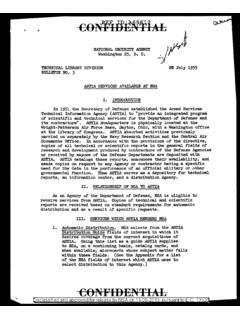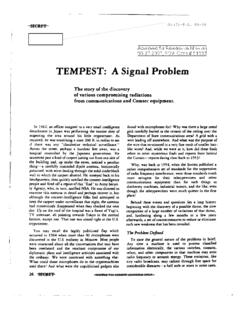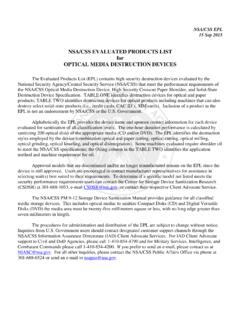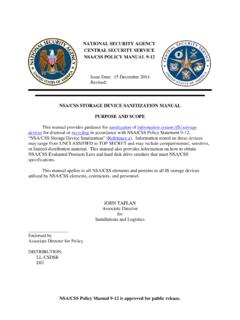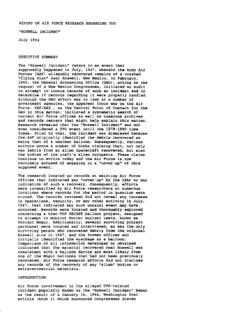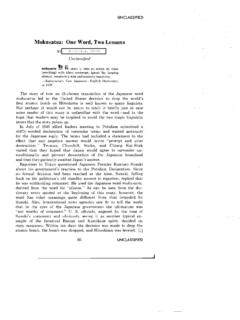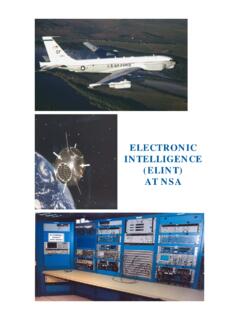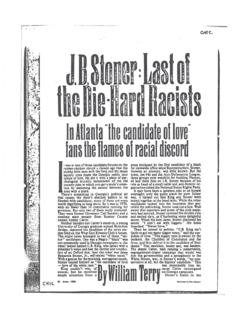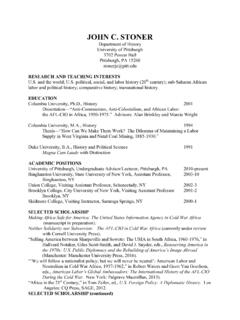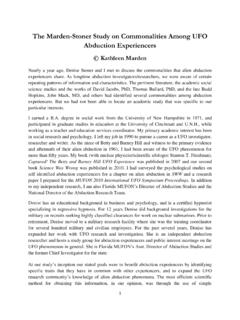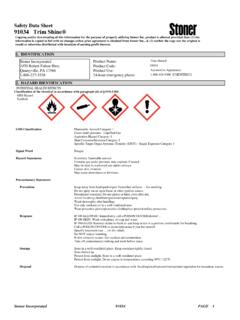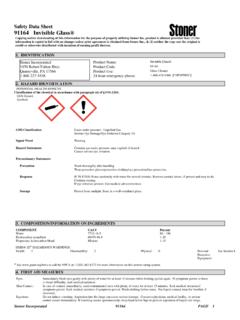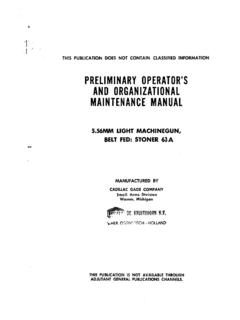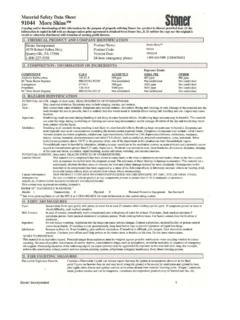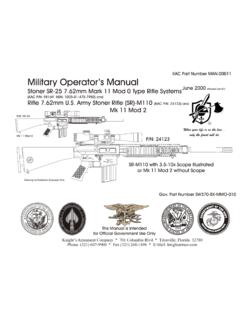Transcription of Jay Robert Stoner, Private First Class, United States Army ...
1 Kumsong, North Korea, 1953 The morning of July 11th, like all mornings on the Korean battlefront in 1953, came way too early for PFC Jay Stoner and the men of the 304th Communications Reconnaissance Battalion. Stoner had been in Korea for over five months, but he still had not gotten used to the daily artillery barrages and relentless enemy attacks in his sector. He and his buddies almost certainly knew of the rumors that the individuals involved in the peace talks at Panmunjan might actually be making progress. But on this July morning, the situation that Stoner and the 304th found themselves in was about as far away from peace as you could get. The early months of 1953 had seen the Chinese Communists step up their attacks along a broad front, with the aim of being in a superior position should the war come to an abrupt end. For this reason, Stoner and the rest of the men in the 304th Communications Group had not had much time to rest that summer.
2 The 304th s primary job was to give the front line infantry units, who were in the thick of the fight, the information they needed to gain an advantage in combat. The unit sought to accomplish this mission by getting close to enemy lines and conducting what was referred to as low-level intercept. This was the technical name for the process of establishing a front-line intercept site, running a communications line to a fixed bunker further towards the rear, then collecting and forwarding critical information on enemy operations and movements in a timely fashion. The system worked. The plain truth was that many of the GIs in Stoner s sector had lived to see another day due to the information supplied by his unit. The Attack Although the 304th had many capable analysts at work on the mission, when the lines went down, the whole process ground to a halt. Stoner s role in this process was to keep the lines working.
3 This responsibility must have been on his mind on the morning of the 11th when the expected incoming mail began to rain down on his position. Seeking shelter from the shelling, Stoner headed for the fixed bunker with the rest of his crew to wait out the barrage. Despite the intensity of the attack, critical information from the intercept site was continuing to flow back to the bunker. Moments later, however, one heavy salvo hit the sector, and the line went dead. Stoner did not know it, but the heavy fire his unit was facing was part of an orchestrated attack by the Communist Chinese on the 8th Army s main line of resistance. Without the tactical information culled from the site, American soldiers would die. Someone had to fix the line. That someone turned out to be Jay Stoner. Beginnings Jay had always loved telephones. He had joined the color guard of the school band at Manor Millersville High School and had other interests as well, but his passion was communications--telephone communications to be exact.
4 His father, a skilled tradesman himself, was impressed with Jay s knowledge but was not overly fond of his experiments --which included tapping into the family phone line and running a block-long telephone line to the neighbor s house down the street. After high school, Jay wanted nothing more than to work for the phone company; however, the year was 1952, and Pennsylvania Bell was hesitant to spend time and money on someone who was so well suited for induction. Jay briefly settled for a job with the local RCA office. He soon realized that it was only a matter of time before Uncle Sam would come calling. With this in mind, he took matters into his own hands and enlisted in the Army. Service and Sacrifice Leaving the safety of the bunker with Yong Koo, his technical assistant, Stoner crawled along the line searching for the break. The shelling intensified. Even so, he was able to locate the damage.
5 He quickly took out the needed material from his kit and repaired the line. The intercept station was back in business. So far, so good. Now it was time to get back to the safety of the bunker as quickly as possible. The rounds were now falling much too close for comfort; shrapnel was flying everywhere. He cautioned Yong Koo, to stay low. Both men cautiously began the journey back to safety. As they came within 100 yards of the bunker, Stoner was struck down. Requiem Jay would never know that his courageous actions had come at a critical time and that his efforts had contributed to saving the lives of many of his fellow soldiers on the front lines. Nor would he ever receive the long-awaited letter from his sister, Anna Jane, informing him that his prayers had been answered--he was finally going to be an uncle. Most troubling, perhaps, was the fact that 16 days later, at 10:12 , the war would finally come to a close.
6 PFC Stoner s death serves as a stark reminder that the practice of cryptology can be a dangerous one, and that courage and bravery, as well as talent and intelligence, are often required to get the job done. Because of his sacrifice, and that of thousands of others like him, millions of men, women, and children today live in freedom on the Korean peninsula. PFC Stoner s actions serve as an eternal reminder that the servicemen and women who risk their lives on the front are not only the backbone of our armed forces, but the guarantors of our American way of life. Jay Robert Stoner Private First Class, United States Army 1932-1953 Purple Heart (posthumous) Bronze Star Medal with V Device (posthumous) Korean Service Medal with 1 bronze service star United Nations Service Medal Photos and medals courtesy of the Stoner Family Narrative - Patrick Weadon, Public Affairs Graphics/Layout - Terri Askew, NSA Creative Imaging Medal Photography - Ralph Bartimo, NSA Creative Imaging Visit our Web site, MEMORIAL DAY 2001
